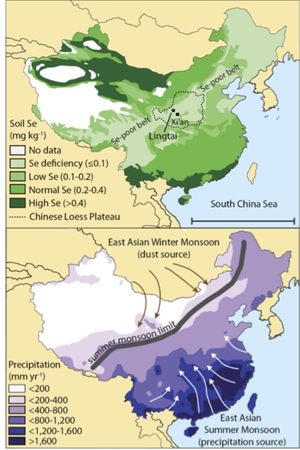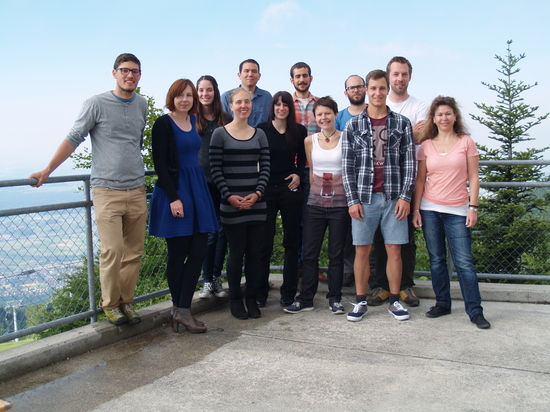Department Water Resources and Drinking Water
Environmental Inorganic Geochemistry
We study biogeochemical cycles of health-impacting trace elements such as selenium and arsenic − from microscopic to global scales.
Our main focus lies on the behavior of selenium in the environment, in the light of the SNFS funded project the global biogeochemical cycle of selenium: sources, fluxes and the influence of climate. The trace element selenium is of key importance to human health but it has a narrow range between doses that are essential to humans and those that are associated with adverse effects. Despite the growing awareness of importance of this element, the behavior of selenium in the natural environment is poorly understood. Regions of both Se deficiency and excess are known, although Se deficiency is a far bigger problem, with estimates of at least one billion people being affected by too low Se intake. In order to prevent future health hazards it is very important that we better understand the processes that control the behavior of selenium in the environment.
Our research is aimed at gaining a better understanding of the processes that control the global distribution of selenium. Research activities are organized in two work programs (A) production of volatile biogenic selenium compounds and (B) deposition of atmospherically transported Se in the terrestrial environment.
Rainfall as a potential source of selenium for soils
Selenium is an essential trace element for human health but in various regions of the world people suffer from selenium deficiency. It has been estimated that up to one billion people worldwide have too low selenium intake levels. Hypothetically, the atmosphere is a source of selenium for the land surface via deposition with rainfall. However to date, this idea has lacked empirical support. Our findings provide support to the hypothesis that rainfall is a source of selenium for soils.
Selenium has a narrow range of safe concentrations: according to scientific studies intakes below 30 micrograms per day may lead to selenium deficiency and intakes exceeding 900 micrograms per day may lead to toxicity. Food crops constitute an important dietary source of selenium and agricultural soils are, in turn, a major source of selenium in crops. Since in many regions of the world soils are low in selenium, selenium deficiencies are widespread: It has been estimated that up to one billion people worldwide have too low selenium intake levels. One of the lowest selenium areas in the world is located in central China, stretching from Tibet in the southwest to Heilongjiang Province in the northeast. In this belt, diseases related to selenium deficiency are prevalent, such as Kashin-Beck disease (a bone disease), which has affected the lives of one million inhabitants.
Until now it is unknown why selenium levels in soils can be highly variable and low in many cases. Hypothetically, the atmosphere is a source of selenium for the land surface via deposition with rainfall. However to date, this idea has lacked empirical support. In a new study, published in Nature Communications Lenny Winkel from Eawag and her colleagues used sediments formed from atmospherically deposited mineral dust (loess) from the Loess Plateau located in north-central China to reconstruct past amounts of atmospheric selenium deposition. They found that soil selenium distribution may be related to China’s main precipitation source, the East Asian Monsoon, as during particular warm and wet time periods in the geologic past selenium concentrations were linked to variability in climatic proxies indicative of effective precipitation.
The findings provide support to the hypothesis that rainfall is a source of selenium for soils. It is likely that the low amount of rainfall in central China, in addition the absence of local sources of selenium, such as selenium-rich rocks, is a main factor in explaining the low selenium belt.
Link to the paper: Blazina, T. et al. Terrestrial selenium distribution in China is potentially linked to monsoonal climate. Nature Communications 5:4717 doi: 10.1038/ncomms5717 (2014).












